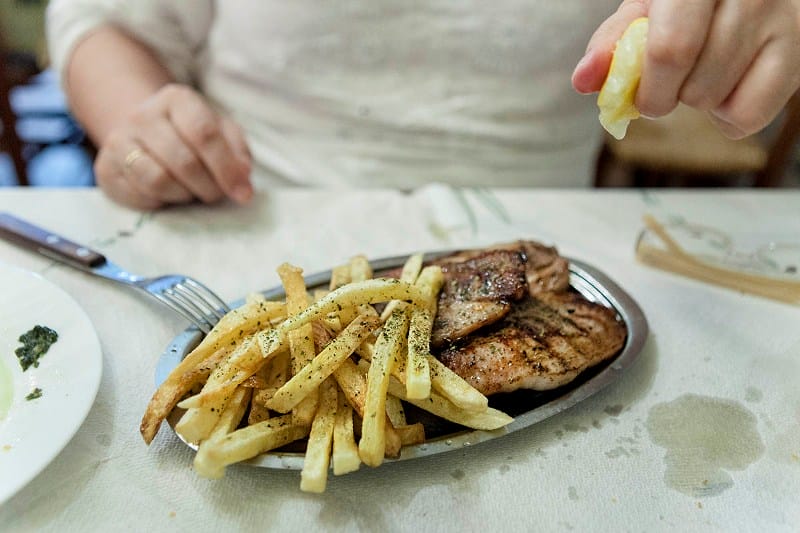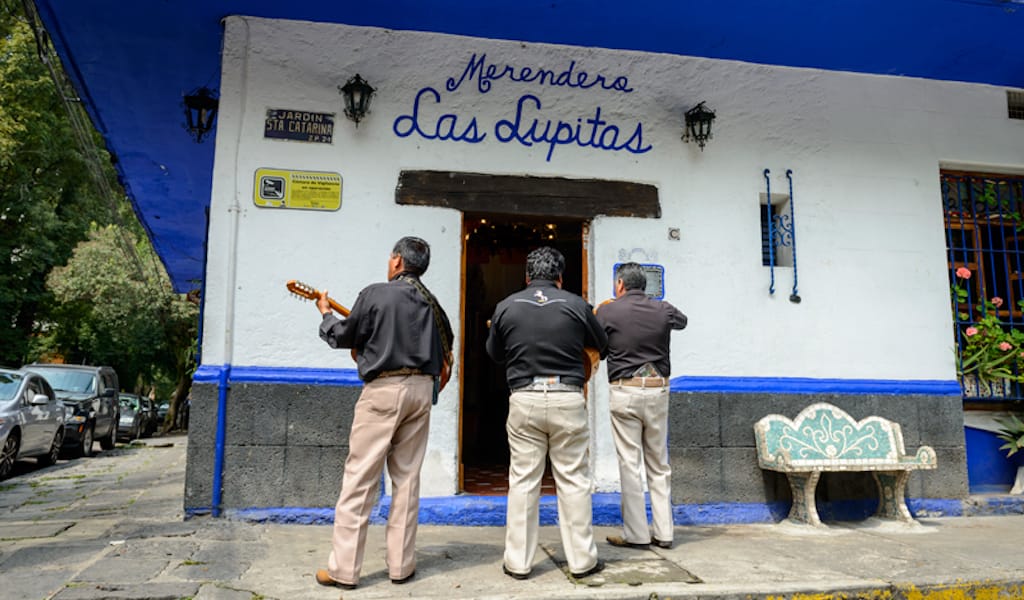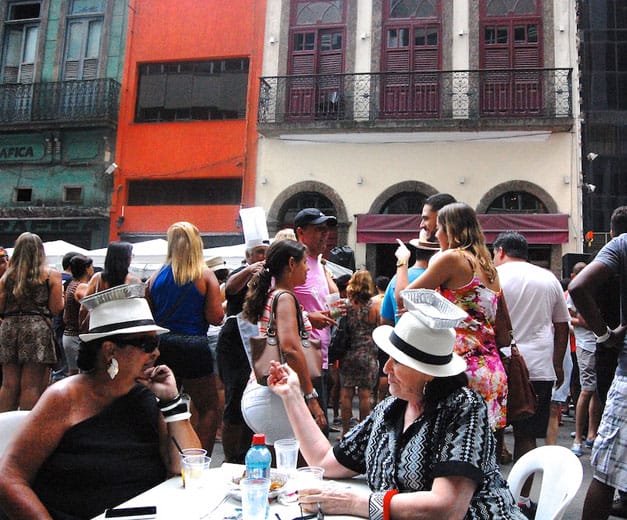For the average visitor to Athens, the culinary scene remains captive to a number of clichés. The cobblestone streets of Plaka are still lined with tavernas and restaurants ready to cater to a rather outdated and make-believe idea of Greek eating: drinking retsina and eating moussaka under the moonlit Parthenon with the occasional bouzouki playing in the background, or going for souvlaki (the most famous Greek street food) near Monastiraki Square among a throng of tourists. These experiences are, unfortunately, still the norm for the majority of travelers to Athens.
True Greek cooking is hard to define. Athens is a cramped city that accounts for more than 40% of the Greek population. Most people have parents or grandparents from another region of Greece and more often than not, these families brought their recipes and cooking with them when they moved to Athens. On the one hand, you find the light, airy dishes of the Mediterranean – vegetables, olive oil, legumes and boiled wild herbs – and on the other, the strong Turkish and Asia Minor influences from the refugees who came from Istanbul and Anatolia in the 1920s, ’50s and ’60s.
The Athens eating scene has had to adapt to many changes and trends in the past 15 years. Though the traditional taverna has never gone out of fashion, the 1990s and ’00s were a period of great discovery in the local culinary scene. The ’90s saw a minimalist, European style of cooking associated with the rise in the standard of living and the boom days of the Athens Stock Exchange. Prices went up as the Athens restaurant industry tried to build the image of a European capital that followed international dining trends. The first Michelin stars were awarded to Greek restaurants during that period.
Since the end of the first decade of the millennium, there has been a definite shift in the public mood. Having at heart never fully embraced any other food except the one served by their mothers and grandmothers, Greeks went back to their roots. The first contemporary tavernas opened with great success, offering a modern spin on the traditional, old-fashioned, smoke-filled venues of the past, while creative Greek cooking became a new trend. The healthy alternative represented by Cretan cuisine – high in olive oil and based on fresh ingredients, legumes and barley rusk – came back in style with a vengeance. (Greece’s largest island, Crete claims the country’s highest life expectancy.)
The financial crisis has intensified this return to traditional eating. The humble yet delicious souvlaki is back in fashion for good, and often offered very cheaply. Bakeries in Athens serve a dizzying array of savory pies that are definitely worth a try, from spanakopita (spinach pie) and peinirli (another Asia Minor influence) to cheese pies with all sorts of cheeses. The latest food craze in Athens is frozen Greek-style yogurt. Frozen yogurt bars are springing up like mushrooms around the city. The taste is a bit like ice cream but with more character and flavor. Tavernas offer tapas-style appetizers and then main courses, and the Athenian custom is to order plenty of appetizers to share around. It’s important to remember that a lot of old-school diners are only open during lunchtime, but it’s worth the effort to visit these places, where you’re most likely to experience real, old-fashioned Athenian-style eating.
The Greek capital is easy to navigate by foot or the metro; the upside of being a traveler in a country that lives on tourism is that most locals speak English and they are usually happy to help. Beware of restaurant opening and closing times, as Athenians eat late lunches and dinners. Most places open for lunch at 1 p.m., although most locals don’t eat lunch until 2 or 3:00. Dinnertime is very late even by South European standards: Athenians usually go out for dinner after 9 p.m. and most restaurants serve food up to 11 p.m. or midnight. And if there’s one last piece of culinary advice for Athens, it’s this: Avoid the touristy Plaka area around the Acropolis and instead explore the downtown area where the locals eat. You will not be disappointed.
 December 9, 2021 Casa Nanda
December 9, 2021 Casa Nanda
More than forty years ago, on the corner of Porto’s Rua da Alegria, or “Street of Joy,” […] Posted in Porto October 9, 2014 Merendero Las Lupitas
October 9, 2014 Merendero Las Lupitas
In the U.S., chimichangas and burritos are always associated with Mexican food, but in […] Posted in Mexico City January 16, 2015 Samba to Go
January 16, 2015 Samba to Go
Composer Pecê Ribeiro is famous for writing songs that spread the glory of Portela, one […] Posted in Rio
Published on July 24, 2012
Related stories
December 9, 2021
Porto | By Cláudia Brandão
PortoMore than forty years ago, on the corner of Porto’s Rua da Alegria, or “Street of Joy,” sat an old charcoal shop. In 1978, after many years working in a renowned local restaurant, Fernanda (Nanda) Sousa took over the shop with her husband and, together with another couple, they converted it into what’s locally known…
October 9, 2014
Mexico CityIn the U.S., chimichangas and burritos are always associated with Mexican food, but in the central part of Mexico those words don’t mean a lot. In Mexico City, specifically, it’s very hard to find burritos that resemble those found north of the border, and the word “chimichanga” doesn’t even exist in our vocabulary. There is…
January 16, 2015
RioComposer Pecê Ribeiro is famous for writing songs that spread the glory of Portela, one of Rio’s oldest and most beloved samba schools in the city’s North Zone. But his newest lyrics tell another story. “Bring your little takeout box over here, and I will put a delicious snack in it,” the song begins. “I…
















































































